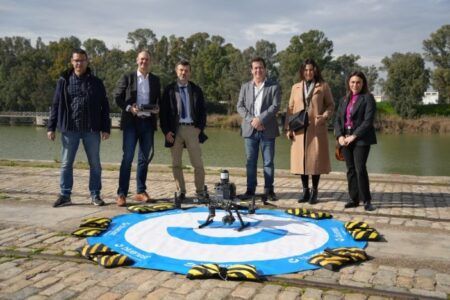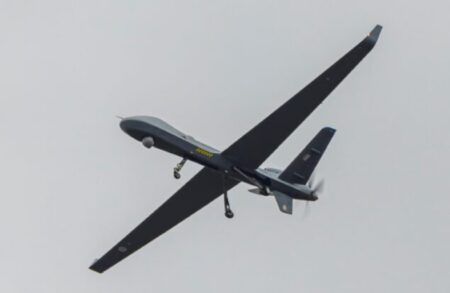Researchers at the the German Research Center DLR have successfully conducted test flights with unmanned gyrocopters carrying freight at low altitudes.
The ALAADy (Automated Low Altitude Air Delivery) system aims to develop a flexible, safe and cost-effective way of transporting by air important cargo such as humanitarian aid or urgently-needed spare parts to the desired location.
The tests were conducted last month at Cochstedt Airport, Germany.
Rolf Henke, member of the DLR executive board responsible for aeronautics research said, “We are developing and testing a demonstrator for uncrewed freight transport, thereby opening up the prospect of carrying loads of up to 200 kilograms for distances of up to 500 kilometres in lower-level airspace.
“Below normal air traffic, the concept allows for flexible operations on regional routes, away from populated areas.”
The uncrewed civilian aerial vehicle developed by DLR researchers for the ALAADy Demonstrator project is one of the largest currently available. During the development of the transport drone, the 450kg gyrocopter underwent extensive modifications, including the installation of a freight-carrying equipment.
The aircraft has been retrofitted with sensors, actuators and a flight control computer, as well as other software and hardware for automated flight. “This technology demonstrator is suited to validating the concepts developed at DLR for low-flying air transport with significantly higher payloads than those systems previously investigated,” said ALAADy project leader Johann Dauer from the DLR Institute of Flight Systems in Braunschweig.
During the flight tests at the National Experimental Test Center for Unmanned Aircraft Systems in Cochstedt, the team of developers initially controlled the uncrewed gyrocopter manually via a radio link. This allowed all of the safety measures and system components to be tested in actual flight, as well as proving the airworthiness of the newly developed transport drone.
“Gyrocopters have the particular advantage of being inherently safe,” said Sven Lorenz, who is leading the construction and trial operation of the technology demonstrator at the DLR Institute of Flight Systems. “This means that in the event of a failure, the free-spinning rotor enables a gentle landing, as occurs with a parachute.”
Several test flights have now been completed, in which the freight drone reached an altitude of up to 150m and travelled at speeds of approximately 100km per hour. “The test flights have already shown that gyrocopters are a suitable configuration for uncrewed air transport,” said Lorenz.
The manual flights are the initial phase of a development process that will incrementally automate the aircraft. Computers are gradually taking over all of the tasks that would otherwise have to be performed by a person within the aircraft or on the ground.
“The next step is for the uncrewed gyrocopter to make its first automated flight,” said Lorenz. “We are currently developing automatic flight control functions for all phases of flight: taxiing, take-off, cruise and landing.”





